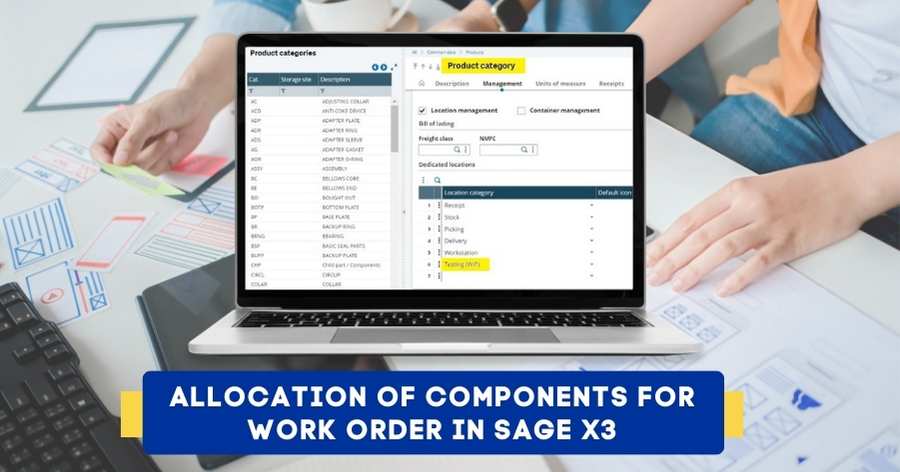Every business owner and dealer who is registered under the GST system must file GST returns based on the nature of their business or transactions. In this blog, let’s learn more about the different GST tax returns and their due date in detail.
What is GST Return?
A GST Return is a document(form) with detailed information about your purchases, sales, output tax (taxes collected on sales), and input tax(tax paid on purchases). After filing GST Returns, you are liable to pay the tax you owe the government.
GSTIN is the short-term for Goods and Service Tax Identification Number. It’s a unique 15-digit number given to taxpayers who are registered under the GST regime. If the taxpayer has to regularly file tax returns, the status of the GSTIN must be active. The status of the GSTIN can be verified using the GST search tool.
In total, there are 22 types of GST returns prescribed under the GST rule. In this, 11 GST Returns are active, 4 are suspended and 8 are view-only in nature. Based on the number and type of GST returns, the tax has to be filed by the taxpayer. Some of the eligible taxpayers include regular taxpayers, composition taxable persons, e-commerce operators, TDS deductors, non-resident taxpayers, Input Service Distributor(ISD) etc.
Who should file GST returns?
- All GST-registered companies should file two monthly returns and one annual report. In total, it will be 26 returns per year.
- For quarterly GST-1 filers, the number of GST filings differs.
- Some unique cases such as composition dealers whose number of GST filings is 5 have to file separate GST returns.
Also Read : Types of GST in India :SGST, CGST, IGST & UTGST
Types of GST Returns
⇒GSTR – 1
GSTR-1 is the return of outward supplies. It has to report all the details of the entire outward supply of goods and services made. In simpler terms, it contains information such as invoice and debit-credit notes raised on the sales transactions for a tax period. All normal taxpayers and casual taxpayers who are registered under the GST are liable to file GSTR-1.
The frequency for filing GSTR-1 is as stated below :
- By the 11th of every month – Taxpayers under this category have to file by the 11th of every month. The business is required to meet one of the following criteria: either have an annual aggregate turnover exceeding Rs. 5 crore or not have opted for the QRMP scheme.
- Quarterly, by the 13th of the month following every quarter – This is applicable only if the business has opted for the QRMP scheme.
⇒GSTR 2
GSTR is the return of inward supplies. The details provided in the receipt should correspond with the supplier’s filed details of outward supplies in the GSTR-2 returns. It is the duty of the receiver to verify, validate, modify or even delete details given in the receipt(provided by the supplier) if necessary. The due date for GSTR 2 is by 15th of every month.
→GSTR 2A(suspended)
GSTR 2A is a view-only GST return and it is applicable to the recipients/ buyer of goods and services. It includes the data regarding the entire inward supply of goods and services(all the purchases made with GST-registered suppliers within a tax period).
Although GSTR-2A is a read-only return where no action can be performed, buyers frequently refer to it in order to accurately claim Input Tax Credit (ITC) for each financial year, spanning multiple tax periods. the buyer can ask for the invoice from the supplier and download it, in case it’s missing.
GSTR 2A was used more for each tax period to claim ITC until August 2020. Subsequently, the buyers have to refer to GSTR 2B, a static return, to declare the input tax credit for each tax period. So, when filing the annual GST return tax, some taxpayers find GSTR-2A useful.
→GSTR 2B
Again, GSTR 2B is the view-only static return significant for the recipient/buyer of goods and services. This started in August 2020 and contains ITC(input tax credit) data for a specific period. So the data can be checked backwards and can be availed.
The Input Tax Credit (ITC) details will encompass the period from the filing date of GSTR-1 for the previous month (M-1) until the filing date of GSTR-1 for the current month (M). By the 12th of every month, the return is made available, giving ample time before filing for the GSTR-3B, where the ITC can be claimed. In GSTR-2B, specific actions are outlined for each reported invoice, including reversal, ineligibility, subject to reverse charge, and references to corresponding table numbers in GSTR-3B.
⇒GSTR 3
GSTR 3 is also a suspended IT return. A monthly summary return was required to provide abridged information on all outward supplies made, inward supplies received, input tax credit claimed, and particulars of tax liability and taxes paid.
This GST return would be auto-generated depending on the GSTR 1 and GSTR 2 filed returns. Normal taxpayers registered under the GST regime had to file this tax return. But since 2017, this tax return has been suspended.
→GSTR 3B
GSTR 3B is a monthly self-declaration that needs to be filed, containing summarized information regarding outward supplies made, input tax credit claimed, ascertained tax liability, and taxes paid.
All normal taxpayers registered under the GST regime are liable to file GSTR 3B. Before filing GSTR-3B for each tax period, it is essential to reconcile the sales and input tax credit details with GSTR-1 and GSTR-2B. GST reconciliation is vital to identify data discrepancies that could result in future GST notices or even the suspension of GST registration.
The GSTR 3B filing frequency is stated below.
- Every month, 20th of the succeeding month – Taxpayers who either had an aggregate turnover exceeding Rs. 5 crores in the previous financial year or were eligible but chose to opt out of the QRMP scheme.
- Filing Deadline for ‘X’ Category of States: Quarterly, on the 22nd of the Month Following the Quarter; for ‘Y’ Category of States: Quarterly, on the 24th of the Month Following the Quarter – This category is for the taxpayers whose aggregate turnover is equal to or below 5 crore, eligible and remain opted into the QRMP scheme.
This GST return is effective from January 2021 tax period onwards.
‘X’ category States/UT – Madhya Pradesh, Gujarat, Chhattisgarh, Maharashtra, Karnataka, Goa, Kerala, Tamil Nadu, Telangana or Andhra Pradesh or the Union territories of Daman and Diu and Dadra and Nagar Haveli, Puducherry, Lakshadweep and Andaman and Nicobar Islands.
‘Y’ category States/UT– Himachal Pradesh, Bihar, Sikkim, Arunachal Pradesh, Nagaland, Manipur, Mizoram, Tripura, Meghalaya, Assam, Punjab, Uttarakhand, Haryana, Rajasthan, Uttar Pradesh, West Bengal, Jharkhand or Odisha or the Union Territories of Jammu and Kashmir, Ladakh, Chandigarh and New Delhi.
⇒GSTR 4
GST return quarterly return for composition supplier or GST 4 is the annual return that is due 18 days from the end of the quarter. So the GSTR 4 will be due on 18th April, 18th July, 18th October and 18th January. The taxpayer can file the quarterly return in FORM GSTR-4 by using the details provided in FORM GSTR-4A and making necessary additions, corrections, or deletions, as required.
⇒GSTR 5
GSTR 5 is the annual GST return that has to be paid by non-resident taxable persons who are registered under the GST regime. This type of GST return is applicable for Non-resident taxable persons who are carrying out their businesses in India. It contains information regarding outward supplies made, inward supplies received, credit/debit notes, tax liabilities and taxes paid. In this type, the GST returns have to be filed monthly by the 20th of every month.
⇒GSTR 5A
It is a briefing for reporting the outward taxable supplies and tax payable by Online Information and Database Access or Retrieval Services (OIDAR) provider under GST. The due date for filing this GST return is the 20th of every month.
⇒GSTR 6
The input service distributor(ISD) has to file this GST return on a monthly basis. It includes data regarding input tax credit, tax received and distributed by the ISD. Additionally, it will include information about all documents issued for the distribution of input credit and the method of distribution.
The due date for filing this GST return is the 13th of every month.
⇒GSTR 7
This is one of the GST returns where the return filed by the taxpayer is required to deduct TDS(Tax deducted at source) under the GST regime. This will include information regarding the TDS deducted, the TDS liability payable and the TDS refund claimed if any. The due date for the filing of GST returns is the 10th of every month.
⇒GSTR-8
It is one of the types of GST returns filed by the e-commerce operators who are registered under the GST regime, those who need to collect Tax at Source(TCS). The information provided includes all supplies made via the e-commerce platform and the TCS collected on the same. The due date for filing this tax return is the 10th of every month.
⇒GSTR-9
GSTR-9 is to be filed by taxpayers registered under GST. So, as per the GST law, this tax return is due by 31st December every year. The document comprises comprehensive information about all outward supplies made and inward supplies received during the relevant financial year, categorized under various tax heads such as CGST, SGST, and IGST. It also presents a summarized value of supplies reported for each HSN code, along with particulars of taxes payable and paid.
GSTR-9 is significant as it is the consolidation of all the monthly and quarterly GST returns (GSTR-1, GSTR-2A, GSTR-3B), filed during a particular financial year. Some of the exceptions of this GST returns are applicable to taxpayers under the Composition scheme, casual taxable persons, input service distributors, non-resident taxable persons and persons paying TDS under section 51 of the CGST Act.
Important notice: According to CGST notification no. 47/2019, which was subsequently amended, taxpayers with an aggregate turnover not exceeding Rs. 2 crores for FY 2017-18, FY 2018-19, and FY 2019-20 are no longer obligated to file the annual return under GST.
→GSTR-9A
This is one of the types of GST returns to be filed by composition taxpayers. It is a suspended annual GST return for composition taxpayers. It presented a compilation of all the quarterly returns filed throughout that financial year.
After GSTR 4(annual return) was introduced, GSTR 9A got suspended. Before that, the requirement of filing GSTR-9A for composition taxpayers had been waived off for FY 2017-18 and FY 2018-19.
→GSTR-9C
GSTR 9C has to be filed by every taxpayer registered under GST returns. It is a self-credited reconciliation statement between the books of accounts and the GSTR-9. The taxpayer whose turnover during the financial year exceeds the limit of Rs 5 crore has to file this GST return. The due date for this Goods and services tax is 31st December(every financial year).
Each GSTIN requires the filing of a separate GSTR-9C form; consequently, one PAN can accommodate multiple GSTR-9C forms.
⇒GSTR-10
This GST return has to be filed by every taxpayer whose registration is cancelled or surrendered. It is also known as a final return that must be filed within three months from the date of cancellation or cancellation order.
⇒GSTR- 11
It is the return to be filed by the taxpayers who received the Unique Identification Number(UIN) to get a refund under GST for the business transaction of goods and services in India. UIN is a designation assigned to foreign diplomatic missions and embassies in India, providing them exemption from tax liability and enabling them to claim tax refunds. GSTR-11 will have information including inward supplies received and claimed refund.
Late filing of GST Returns
Returns filing is crucial under GST. Even if there are no business transactions, a NIL return must be filed.
Note:
- A return for the next month cannot be filed if the previous month/quarter’s return is not filed.
- Consequently, delayed filing of GST returns will result in a domino effect, culminating in substantial fines and penalties.
- The late filing fee for GSTR-1 is automatically reflected in the liability ledger of the subsequently filed GSTR-3B following the delay.
How to file GST Returns online?
GST Returns can be filed electronically via the Goods and Service Tax Network app or program.
- First, begin by assessing the GST portal and logging into your account using the 15-digit GST Identification Number, which depends on the state code and PAN assigned to you.
- Once you are logged in, proceed to upload your invoices on the GST portal. Each invoice you upload will be assigned an invoice reference number.
- After successfully uploading the invoices, the next step is to file the outward return, inward return, and monthly return.
- For the outward supply, complete the filing in GST-1, available in the GST Common Portal Details segment, by the 10th of each month.
- The outward return for materials should be handled through GSTR-2A. Review and modify the particulars of the outward supply, credit, and debit notes as needed.
- Provide the descriptions of the inward supply of taxable goods and services in the GSTR-2 form.
- The receiver of GSTR-1A can later modify the information provided on the outward and inward supplies. However, the supplier holds the right to accept or reject any changes made.
Conclusion
Finally, we have learned in detail about the different types of GST returns. The businesses have to carefully assess and identify the returns and appropriately file them. ERP System is an efficient solution for ensuring timely claims of ITC and helps in avoiding last-minute conflicts with vendors for any inconsistencies.






